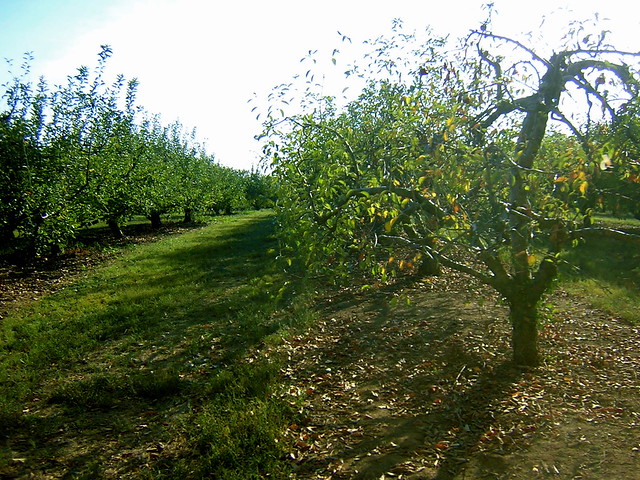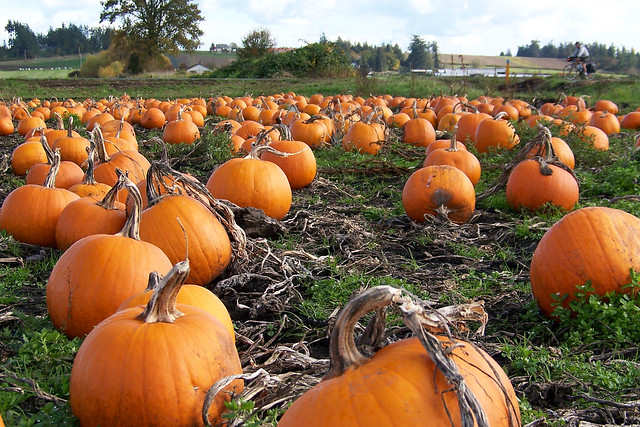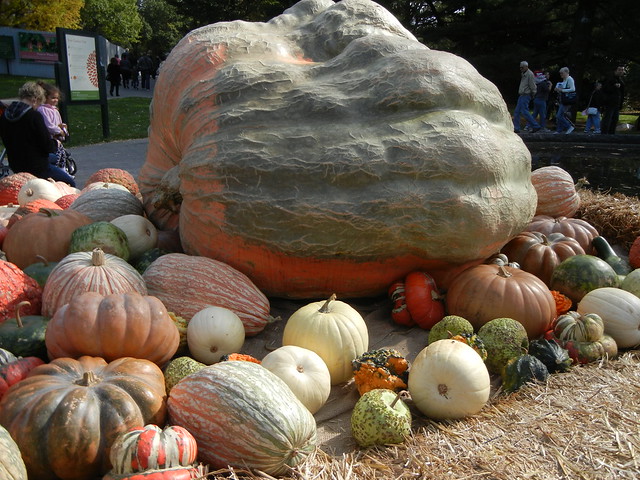After publishing my corn maze update yesterday, I realized that I haven’t yet examined how this year’s pumpkin and apple crops are progressing. My singular focus on the corn crop stems from the fact that I have completed my corn maze directory but haven’t yet begun to compile my apple orchard and pumpkin patch directories. I know that Funtober visitors this fall will be itching to pick their own apples and pumpkins, so I had better get cracking on my coverage of these two important crops. Here’s the first update.
Unfortunately, the apple crop this year has been devastated by the spring weather. Unusually warm temperatures in March caused the apple trees to blossom earlier than they would normally. But the weather turned cold in April and the frost severely damaged crops in the eastern half of the United States. Freezing temperatures overnight impacted the blooms at a critical stage. As a result, some orchards have already declared that they will not open this fall. And other farms may not allow you to pick your own apples from the trees.
How bad is it? The crop of apples is expected to be down by 50 percent overall in NY. The situation for some farmers is so bad that New York State politicians have proposed the Family Farmers and Apple Growers Relief Act to provide a tax credit to New York farmers. The news articles that I’ve read indicate it is pretty grim in Michigan as well. Minnesota, which is believed to have managed to fare pretty well through the April frost, may lose just 15 percent.
At the moment, it’s hard to tell how big the apple crop will be. The impact of the weather varied from region to region and farm to farm within regions. So it is possible that an orchard could be facing the prospect of an extremely small crop while another farm a few miles away could still have a decent harvest. And some farms may ultimately decide that it is better to close the orchard this year than continue to spend time and money on what is expected to be a minimal harvest of apples. Others will import apples from Western states or buy from neighboring farms to meet demand at their stores.
The good news is that I haven’t discovered any problems with the pumpkin crop yet! In 2011, wet weather damaged the pumpkin crop on the East Coast and created a smaller than expected selection of pumpkins. But there have been so many reports of pumpkin shortages over the past few years that you can now find a number of articles from 2011 discussing the media reports of phantom pumpkin shortages.
The pumpkin crop has just been planted at a number of pumpkin patches according to reports on the internet. Bill’s Berry Farm in Washington planted their pumpkins the last week of May. May Farms in Colorado planted their pumpkin patch over the past week. And volunteers planted the pumpkin seeds at the Mount Bleak Farm in Sky Meadows State Park in Virginia yesterday. So it is far too early to declare a 2012 pumpkin shortage. 😉
While some are just planting their pumpkins, others have been carefully nurturing their pumpkins for months. The Cleveland Plain Dealer published a story about Jerry Rose yesterday. He has been growing giant pumpkins for over 30 years. In 2010, he grew a pumpkin that weighed in at 1,554 pounds. It’s the second story in a series that they are publishing about Rose’s quest to grow this year’s largest pumpkin (here is the first). It is an interesting story and the series is definitely worth reading. How can you not want to learn about growing giant pumpkins?





Pingback: Heat Hurts Pumpkin Patches